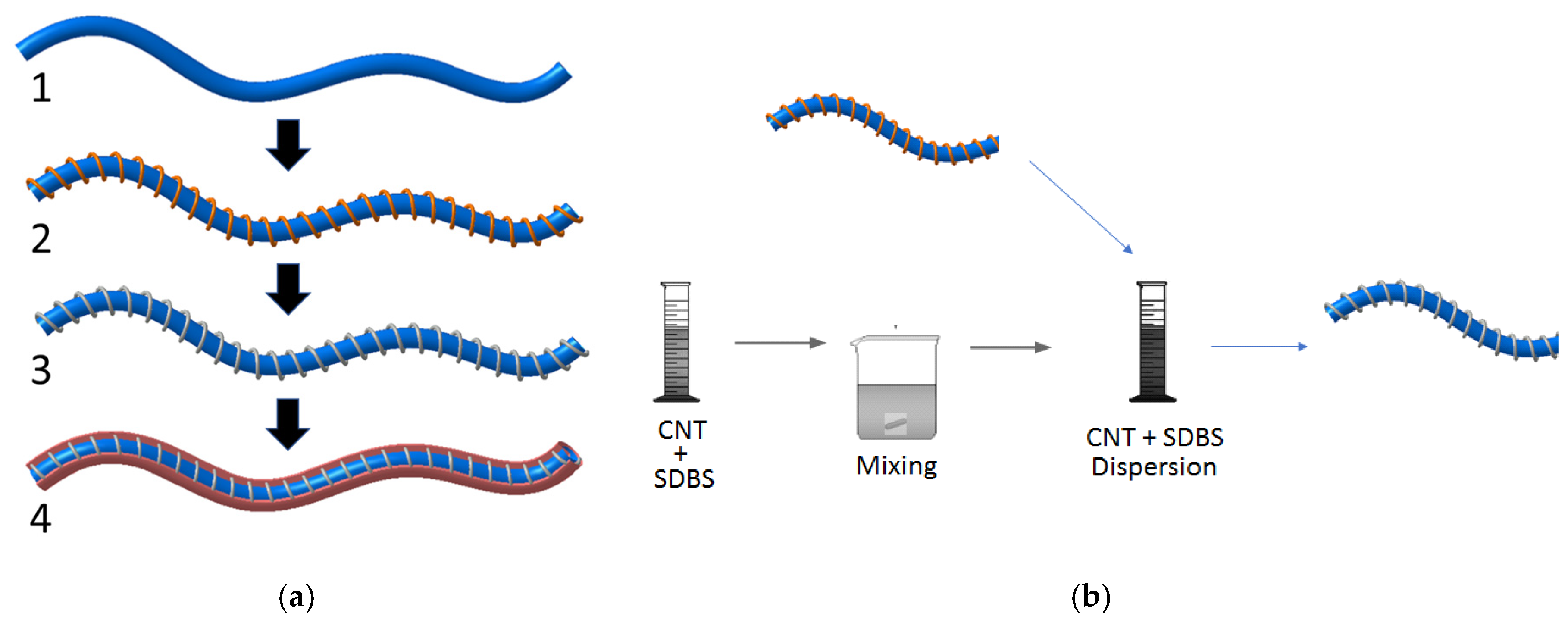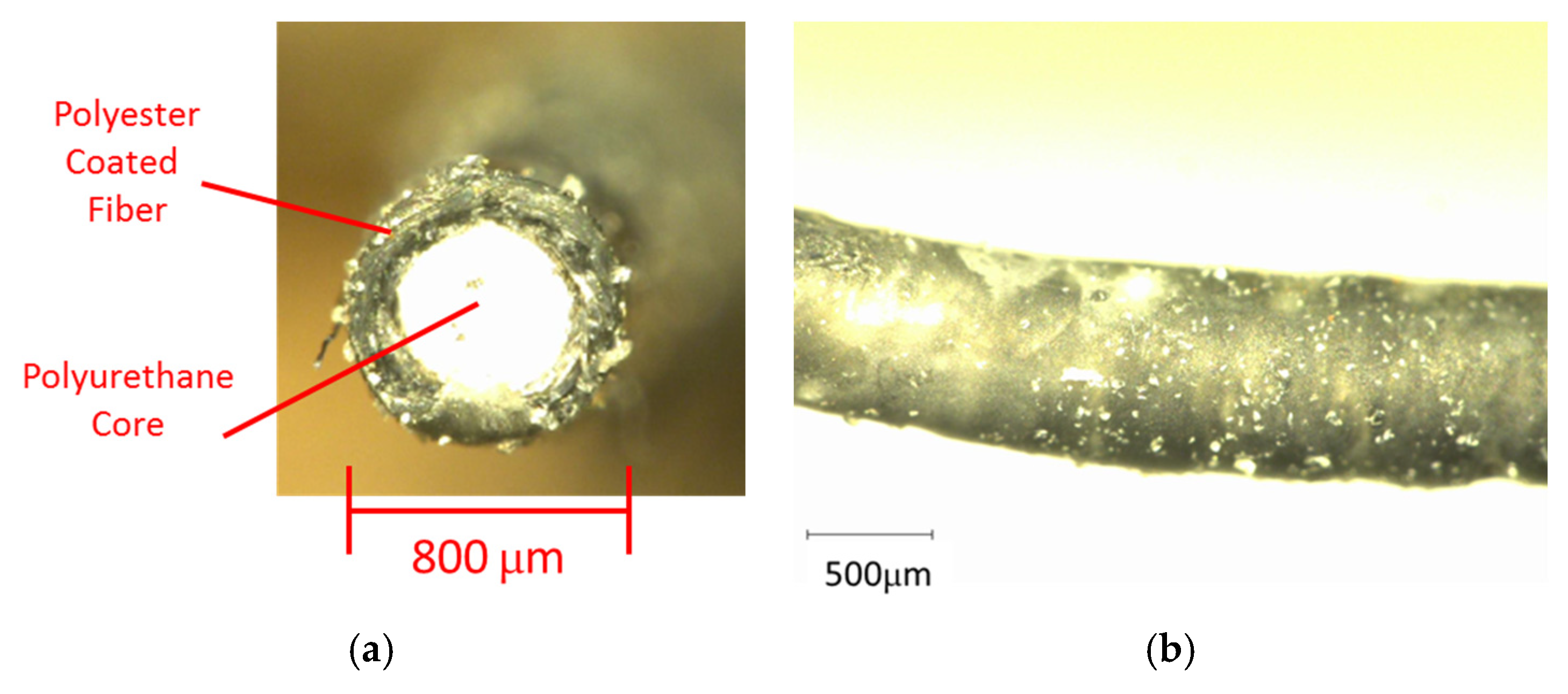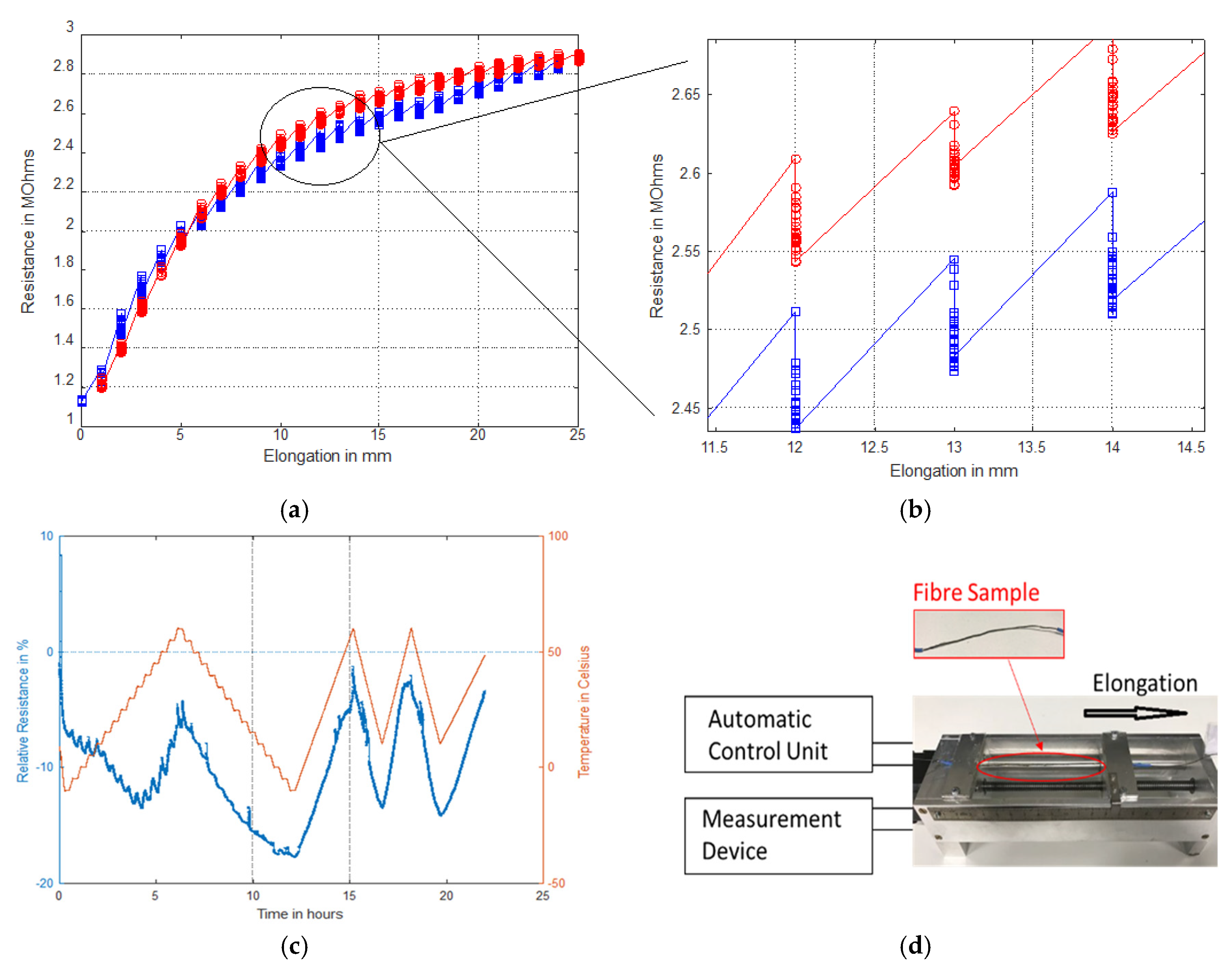Study of Elongation and Temperature Effects on Nanocomposite Based on Elastic Fiber †
Abstract
:1. Introduction
2. Materials and Methods
3. Results
3.1. Microscopical Characterization
3.2. Electrical Characterization
4. Conclusions
Acknowledgments
Conflicts of Interest
References
- Sun, J.; Huang, Y.; Fu, C.; Wang, Z.; Huang, Y.; Zhu, M.; Zhi, C.; Hu, H. High-performance stretchable yarn supercapacitor based on PPy@CNTs@urethane elastic fiber core spun yarn. Nano Energy 2016, 27, 230–237. [Google Scholar] [CrossRef]
- Jost, K.; Durkin, D.P.; Haverhals, L.M.; Brown, E.K.; Langenstein, M.; de Long, H.C.; Trulove, P.C.; Gogotsi, Y.; Dion, G. Natural Fiber Welded Electrode Yarns for Knittable Textile Supercapacitors. Adv. Energy Mater. 2015, 5, 1401286. [Google Scholar] [CrossRef]



Publisher’s Note: MDPI stays neutral with regard to jurisdictional claims in published maps and institutional affiliations. |
© 2017 by the authors. Licensee MDPI, Basel, Switzerland. This article is an open access article distributed under the terms and conditions of the Creative Commons Attribution (CC BY) license (https://creativecommons.org/licenses/by/4.0/).
Share and Cite
Torres, R.; Jalasutram, A.; Benchirouf, A.; Müller, C.; Kanoun, O. Study of Elongation and Temperature Effects on Nanocomposite Based on Elastic Fiber. Proceedings 2017, 1, 389. https://doi.org/10.3390/proceedings1040389
Torres R, Jalasutram A, Benchirouf A, Müller C, Kanoun O. Study of Elongation and Temperature Effects on Nanocomposite Based on Elastic Fiber. Proceedings. 2017; 1(4):389. https://doi.org/10.3390/proceedings1040389
Chicago/Turabian StyleTorres, Renato, Adytia Jalasutram, Abderrahmane Benchirouf, Christian Müller, and Olfa Kanoun. 2017. "Study of Elongation and Temperature Effects on Nanocomposite Based on Elastic Fiber" Proceedings 1, no. 4: 389. https://doi.org/10.3390/proceedings1040389
APA StyleTorres, R., Jalasutram, A., Benchirouf, A., Müller, C., & Kanoun, O. (2017). Study of Elongation and Temperature Effects on Nanocomposite Based on Elastic Fiber. Proceedings, 1(4), 389. https://doi.org/10.3390/proceedings1040389



